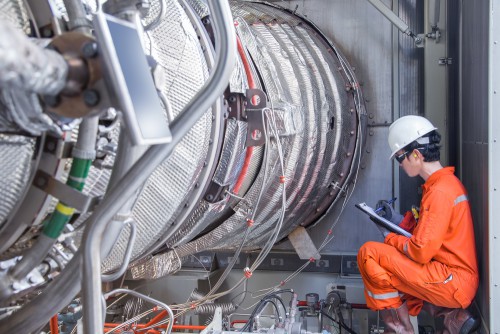Condition Monitoring, Preventative Maintenance & Planned Maintenance

Monitoring and maintenance are an essential part of engineering designed to prevent equipment failures. On a simple level, this can be looking at tyre tread depth on a vehicle, to advanced physical and chemical monitoring of gas turbines generating electrical power.
Condition Monitoring
This can be defined by the process of measuring a parameter in machinery such as; vibration, temperature, wear metals, viscosity etc looking for significant changes which imply a possible fault without taking the equipment out of service or offline.
If we take the analogy of a motor oil, then a small amount would be taken and tested to look for key indicators. An increase in Iron, Copper, Tin or Aluminium would tell the analyst how the engine was wearing with age. An unusual increase in certain elements may point towards Bearing, Liner or another component failure; therefore, preventing future catastrophic failure.
Many key features can be analysed depending on the application. Changes in viscosity can indicate fuel contamination, oxidation or cross-contamination with other lubricants. Coolant leaks can be detected by monitoring specific chemicals such as Sodium and/or Glycol and the detection of poor oil drains through continuous increases in soot levels particularly in diesel engines.
With larger installations, for example, Gas Turbines, vibration and temperature monitoring would alert operators of wear which coupled with oil analyses would prevent damages running into millions.
Many other lubricants, coolants and greases can be monitored using bespoke sampling and testing protocols to ensure the optimum performance from your fluids.
Preventative Maintenance
This can be defined as servicing equipment looking at small problems before they become larger ones. The goal of any preventative maintenance program is to eliminate costly breakdowns. Preventative maintenance would typically be planned for example monthly, quarterly, or annually depending on the equipment in use.
An analogy can be vehicle servicing. Serving is designed to replace motor oil, take oil samples for monitoring, change air and oil filters, make adjustments / measurements, grease moving parts, check seals, update software and ensure any parts that normally wear are not allowed to reach critical levels thereby resulting in longer stoppages.
Planned Maintenance
This can be defined as a scheduled amount of time to replace or overhaul equipment. This equipment would be offline or out of action for a predetermined interval to undertake work which could otherwise be undertaken whilst equipment is in use.
The best example of this would be a gas turbine generating electricity for the national grid. Turbines cannot be taken offline without notice and overhauls are planned to ensure all spares and replacements are available beforehand. During this time equipment is stripped down with assemblies weighing many tonnes removed, cleaned, and precision inspected with additional removal of bearings, lubricating oils and lubricants over a prolonged outage period. Precision engineering is required to ensure once assembled, the turbine will run continuously over a period of many years.
Planned maintenance is by its nature expensive not only in terms of replacement parts and labour but also the amount of time equipment is not in use. Such maintenance is not necessarily for larger expensive projects and can be for all kinds of equipment from Natural Gas engines generating power to medical respirators. Indeed, any equipment which has wearing parts during use.
Conclusion
Designing Condition Monitoring and maintenance programs is a skilled exercise which requires knowledge of its use and engineering. Exol Lubricants has its own program – fluid Check which can be tailored to protect your significant investment from unplanned downtimes and costly repairs by detecting potential future failures before they happen.

